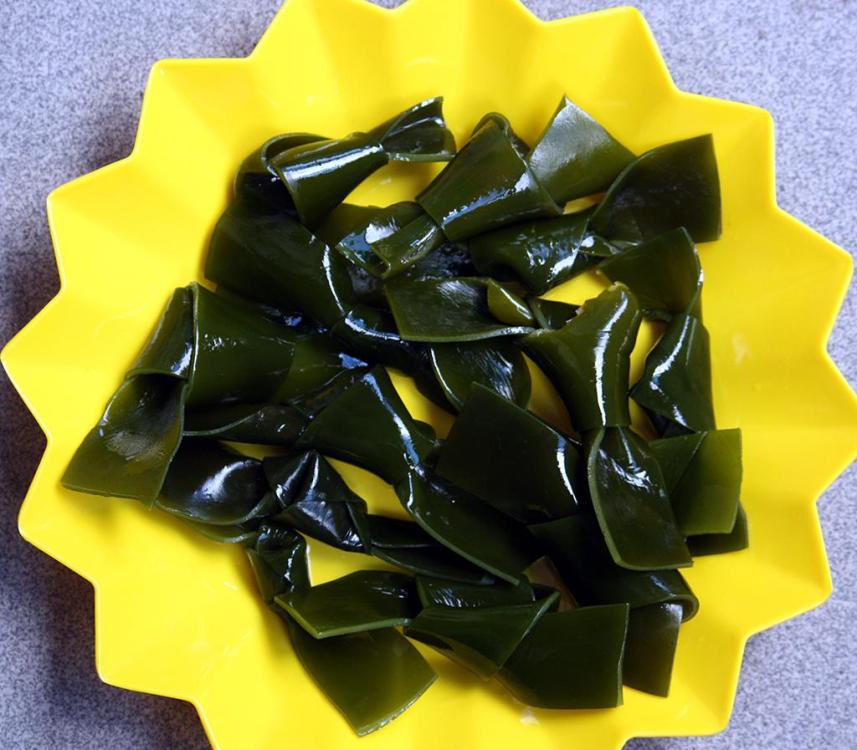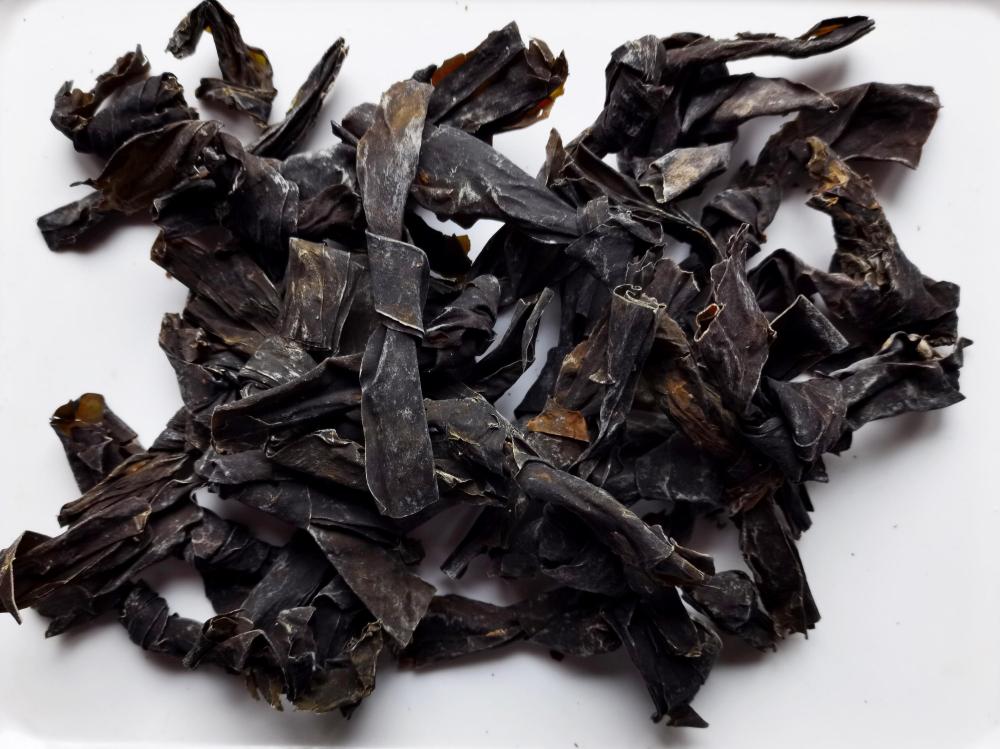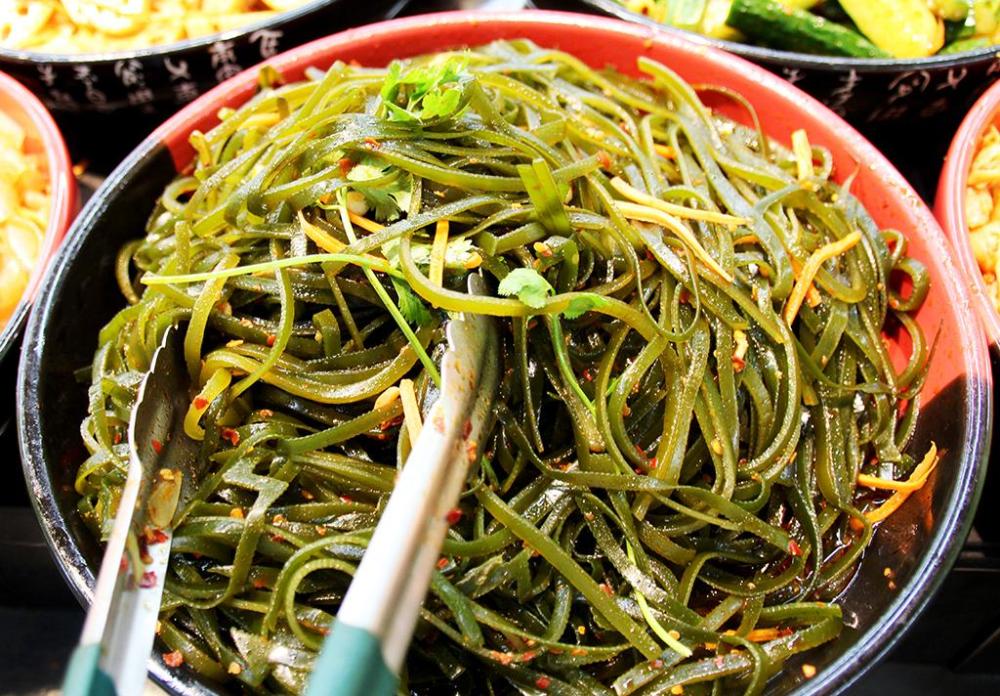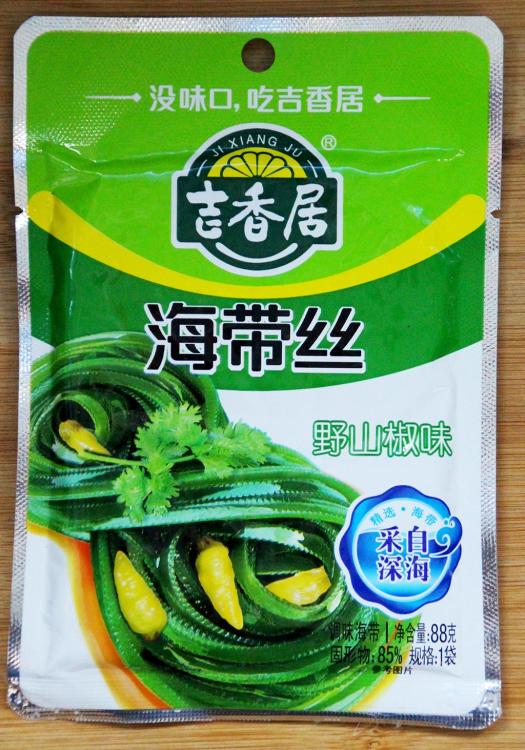The second most common culinary seaweed eaten in Japan after wakame is what is known in the west as as ‘kombu’ but is more correctly 昆布 (konbu). In Chinese it is 海带 (hǎi dài) or, less often 翅藻 (chì zǎo) and in Korean 다시마 (dasima). There are around 30 varieties of kelp in the Laminariaceae family, but only eighteen are regularly eaten. The favoured variety in Japan, China and Korea is Saccharina japonica, formerly classed as Laminaria japonica) and known in Japan as ま 昆布 (ma konbu).
The vast majority of the kelp harvested in Japan is done so around Hokkaido island in the north (accounting for around 95%). However, China is the largest producer by far.
The kelp grows in large ‘kelp forests’ and in ideal circumstances, can grow to 45 metres / 150 ft tall, with some species growing 27 to 60 cm / 10 to 24 inches per day.
Not only do the kelp forests provide us with highly nutritional fodder, they offer protection and a diverse ecosystem to the many life forms which shelter within. Algae, fish and shrimp all take advantage, some living there all their lives. Others only use them as nursery areas for their young.
So how is kelp used? Much more than you might think. Even if you’ve never knowingly eaten it, you probably have ingested some at some point. It is used in toothpaste as a binding agent. You may have washed your hair with it! And if you are a fan of ranch dressing or common breakfast cereals, you’ve eaten it. It is used as a binder there, too. It is a good source of calcium for us oldies and vitamin K doesn’t go amiss either. It is also low in calories and, most importantly, it tastes good!
Kelp forests are under threat from rising sea temperatures and storms like El Nino wreak huge damage. Australia, for example, has been reported as losing more than 60 miles of forest to rising temperatures.
Dried konbu is famously used in Japan to make 出汁, だし, dashi. Its strong (うま味) unami taste helped in identifying that ‘fifth taste’ and the development of monosodium glutamate (MSG). It is also pickled (す 昆布 su konbu).
Here in China, in the supermarkets, it comes in what look like sheets of ancient leather (first image) but we can find it in more manageable pieces – both fresh and dried. Short pieces are tied into very popular kelp knots which are used in soups, hotpots, and cooked salads. It is also sold cut into strips like noodles.

Fresh Konbu Knots

Dried Konbu Knots
Konbu Knot Salad

Konbu "Noodles"
Kelp is also pickled and sold in small packets as a snack food.
Pickled Konbu
Pickled Konbu
Parts of this appeared before in the Guangxi Gastronomy topic








